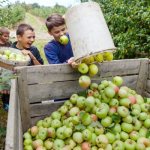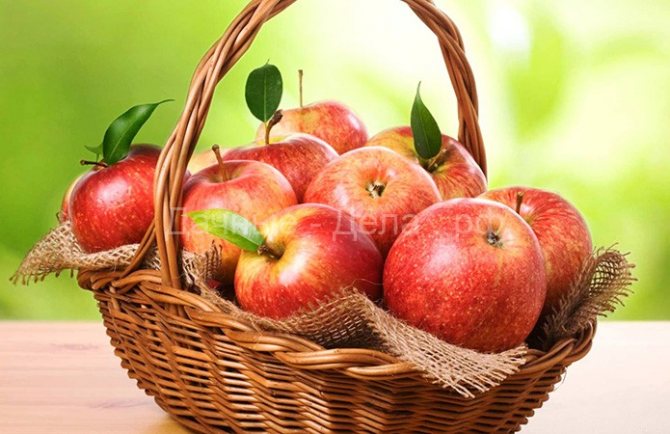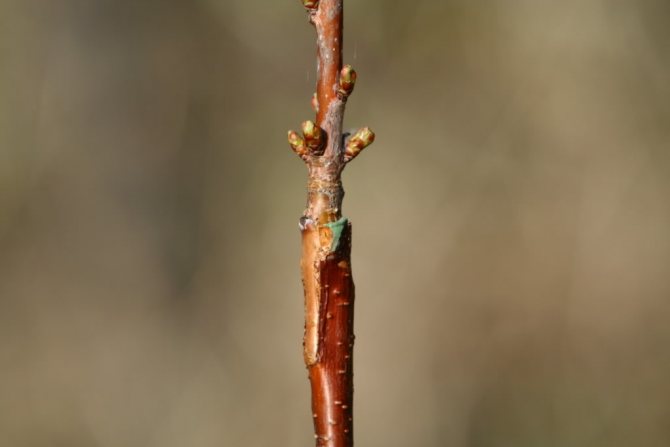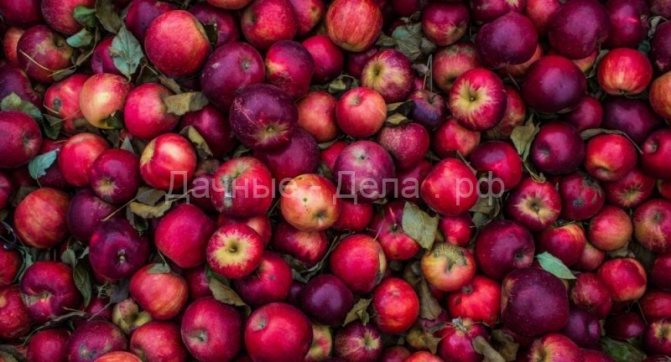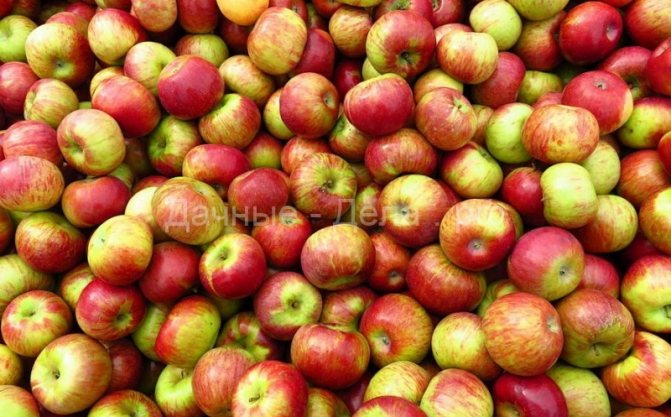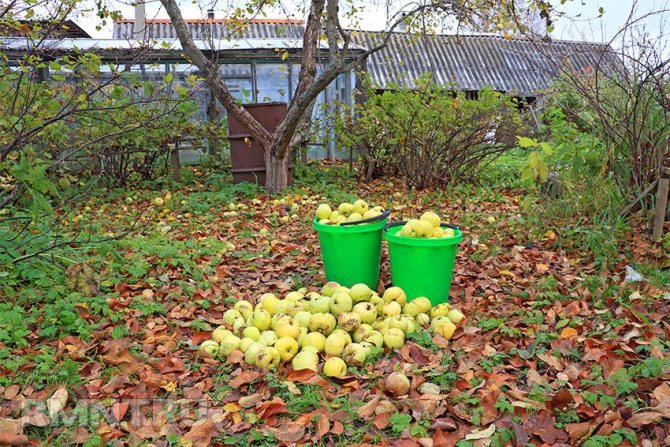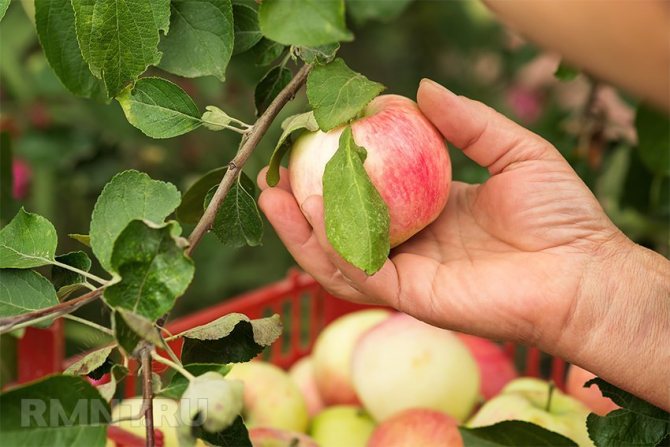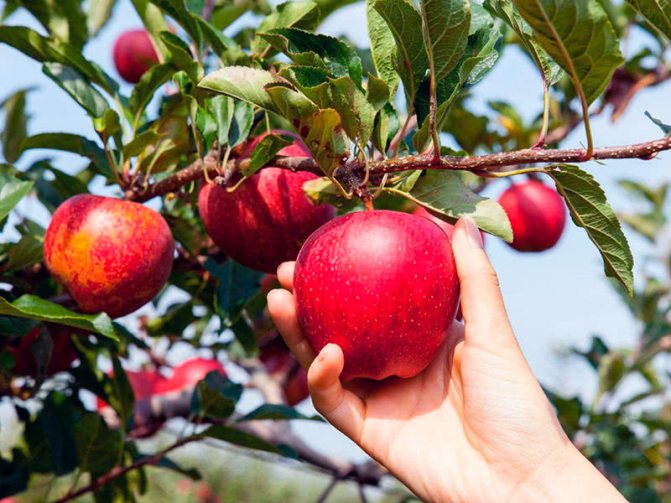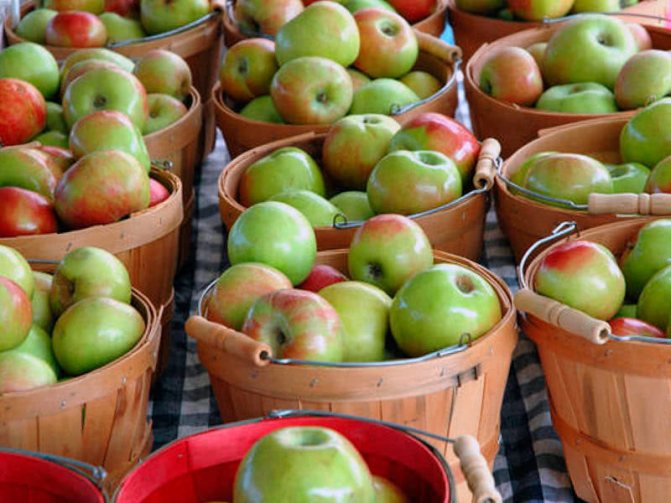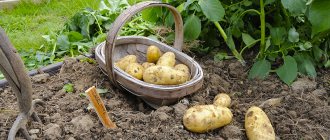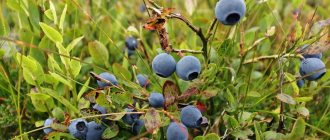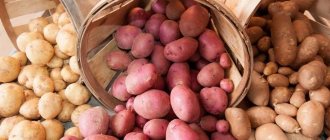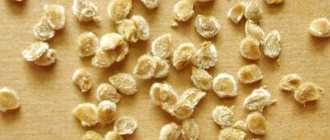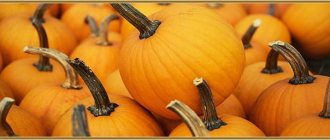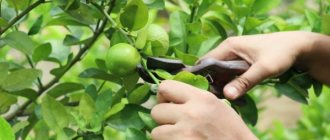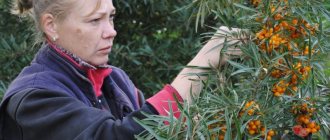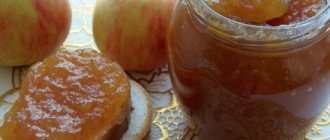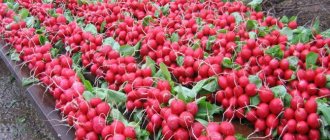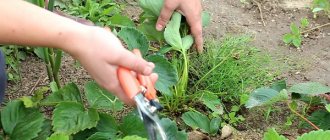2807.18
You can not remove unripe fruits, because they did not have time to accumulate a sufficient amount of sugar and they sour. In order not to be mistaken, you need to know not only at what time a particular variety ripens, but also be able to visually determine when the harvest is ready.
When can you pick apples
The harvest time for apple trees can be determined by what variety is planted and for what purpose. Each tree has its own ripening period, which is important to consider. However, these indicative dates are conditional and may change under the influence of climate.
And also the future goal should be determined. Summer ones, as they ripen, are removed and eaten, and those that do not go into food immediately become tasty preparations for the winter. It is better to remove autumn varieties for storage a little earlier than they overripe, so that the taste is excellent, and at the same time they are stored for a long time. And winter apples, when removed, do not have the necessary taste at all, but acquire them during storage.
How to identify ripe apples
There are several methods for determining the ripeness of apples. Of course, you can use special kits that are sold in gardening shops and markets. They can show the song for sure. But there are simpler options. There are some indicators that determine when it is time to collect apples for storage.
Here is some of them:
- you need to pay attention to the carrion. When good fruits appear among it, large in size and ripe in appearance, then, most likely, it's time;
- pressing the fruit with your finger, you need to pay attention to the dent. If it has leveled off, then the apples are green, if the skin is broken, then they are overripe, and when it keeps its shape, you can pick it up;
- the easiest method is to taste it. It is necessary that the pulp is light, the taste matches ripe, the bones are of a dark brown hue;
- when the fruit is fully ripe, it is conveniently removed from the branch;
- using iodine will help determine the amount of starch in apples. You need to drop a few drops on the cut and see the reaction. Its greatest amount is in unripe fruits, so the blue color of the drop will show that the apple is green. But a yellow spot will be evidence of an overripe fruit.
Advantages and disadvantages of the species
Among the advantages, we have already noted the low calorie content above, which will not easily help you not to gain extra pounds, but thanks to the acidity level, these wonderful apples improve metabolism. Other advantages include drought resistance, wind resistance and long-term storage of fruits.
The disadvantage is low winter hardiness, which is why the planted seedlings may not take root from the first planting. However, with proper care of the seedlings in the first years after planting, even in colder climates, good results can be achieved. Also, this species is poorly susceptible to powdery mildew and scab - common diseases of apple trees.
In the first years of life, seedlings may already be infected with diseases, pay attention to the condition of the trunk and leaves, and periodically process them.
The fact that the tree will grow for joy - fluffy and rounded may be good from an aesthetic point of view, but the thickening of the crown is also a disadvantage.Even if your seedlings live only the first year, do not forget to take care of the thickening of the tree branches, thin out the crown - this way you affect fruiting.
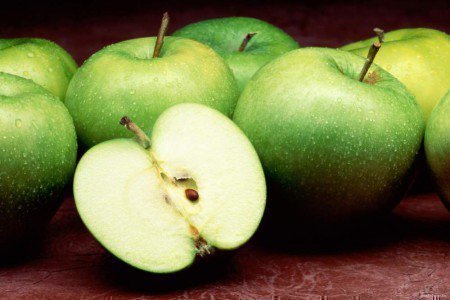
In apples "Renet Simirenko" the sugar and acid content is almost ideal
Consider the ripening time of the varieties
An important condition for storing apples will be their timely removal from trees. All of them are divided according to the ripening period.
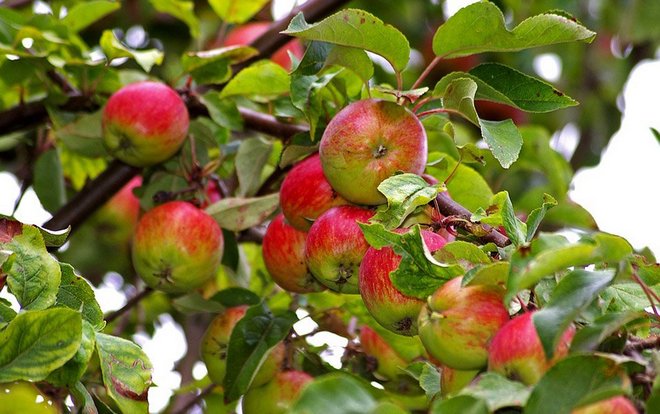

Ripe apples.
There are several groups:
- summer varieties are removed in the midst of ripening, when the fruits are ripe, in order to use them fresh and start up for processing;
- varieties of autumn ripening are harvested at the beginning of September and left to be stored for up to 3-4 months, but after the expiration of the period, their pulp becomes friable, and the taste deteriorates.
Features of winter ripening fruits
Winter representatives are removed from trees when they are still hard and tasteless. Most often this happens at the end of September or at the beginning of October, depending on the climatic conditions. But they will need to be properly stored so that they are guarded until spring. And during this period they will lie down and collect sugar in order to fully show their taste.
Basic information about the apple tree
The apple tree is an unpretentious tree and bears fruit even in the most frosty regions. Apple trees growing in gardens spread their branches wide. The tree blooms in spring at temperatures not lower than 15 degrees and lasts only 10 days. In different regions, apple trees bloom on time. The tree begins to bear the first fruits after 3-5 years and continues to bear the harvest for another 50 years.
On a note! The fruits contain a large amount of useful substances: vitamin C, fructose, lactose, keratin and others.
How to pick apples correctly
To collect ripe fruits, you will need to choose a fine day, even if it happens in mid-autumn. It's important to pick them dry, so it's best to do this in the afternoon. This is especially true for winter varieties.
First of all, you need to remove the apples that are on the southern, sunny side. It is more convenient to start from the bottom, gradually removing the fruits higher and higher. The northern side ripens 2-3 days later.
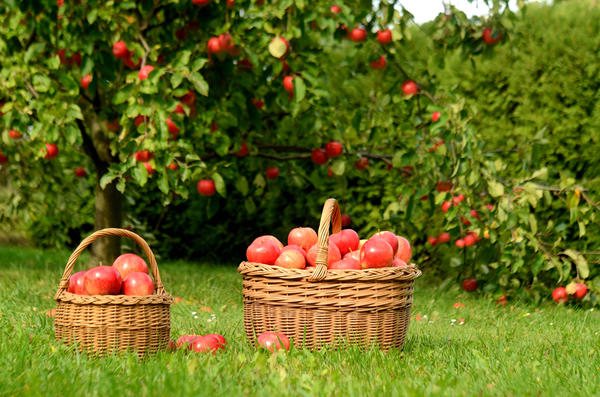

Harvesting apples.
Apples must be carefully picked without breaking or twisting. Sorting is also an important requirement. All defective, wormy, diseased and damaged items must be taken away and recycled immediately. If you leave bad fruits stored, then they can damage their neighbors.
Collection methods
You also need to pick the fruits correctly. You will need to make sure that they are not damaged and placed in the same container with the rotten ones.
Harvesting methods:
- manually. The familiar method of removing apples from a tree with your own hands. So you can pluck them carefully and fold them neatly;
- using fruit pickers, special devices like baskets with a long handle.
How to pluck
Even the manual procedure for picking apples from a tree should be done correctly. And there are some rules.
- The apples must be dry during picking. Therefore, it will be necessary to choose a time in the afternoon to dry the dew. And also do not water the tree just before the procedure.
- You need to tear off the lower ones first, and gradually those that are higher. This will be more convenient, less likely to damage the fruit. And also, first they shoot from the south side, and then from the north.
- The fruit must be taken in hand, lifted and rotated. If you pick it right, the stalk will separate from the branch and remain with the apple, thereby extending its shelf life.
- Carefully you will need to lay out the collected fruits in boxes so as not to damage the skin.
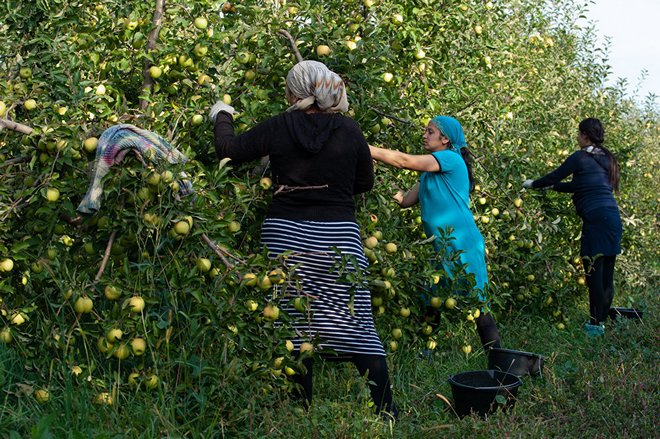

Hand picking apples.
It is better not to put in the same container with good, damaged and rotten fruits, but leave them for processing. Otherwise, you can lose the entire crop.
A few general cleaning principles
For long-term storage, apples should be picked following a few basic rules.
- Always pick apples only in dry weather, after waiting for the morning dew to dry.
- When planning to transport the harvested crop, pre-cool it to a temperature of 8-10 ° C. So the fruits will transfer transportation much easier.
- Pick apples as soon as ripeness is reached. Unlike consumer ripeness, the fruit at that time had already stopped growing, but it was still quite tough and contained more acids than sugar. It is during this period that the fruits are best processed, transported and removed for storage.
- The ripe fruit is fragrant and sweet, but if removed at this stage, the apple will very soon become dry and crumbly. The main difficulty in collecting early varieties is to have time with harvesting before the onset of consumer ripeness, since it is reached very quickly after picking, after about a week.
- Please note that the weather conditions of a particular season significantly affect the ripening time. The hotter and drier the weather, the earlier the fruit ripens. But the cool summer pushes this event to a later time, so that winter varieties may not ripen at all.
- The crop is stored immediately after harvest. It is important that the room temperature is in the range from 0 to + 4 ° С and the humidity is high enough (85–90%).
All apple varieties are divided into three large groups: summer, autumn and winter. Each of them has its own characteristics and timing of harvesting.
How to store apples properly
In order for the fruits to survive the entire prescribed period, they will need to provide the proper conditions. But before you put them in storage, you need to do some manipulation.
The optimal storage conditions will be a temperature of 2 -5 degrees and a fairly high humidity, under 90%. A cellar, basement, insulated balcony or refrigerator, if the dimensions allow, are well suited.
Another practical way to store apples for the winter is in the ground. It is relevant for those who do not have a cellar or basement on the site. A trench is dug on the site, its depth should be 65-75 centimeters. Spruce branches or juniper branches are laid on the bottom, which will serve as insulation. Apples are spread on it in bags in which miniature holes are made. It is important that the plastic containers are new, free from any signs of use, and that they can be tied. A layer of earth is laid out on top, and for insulation they are covered with roofing material. So that the covering material does not fly off due to severe frosts, it will need to be pressed down with something.
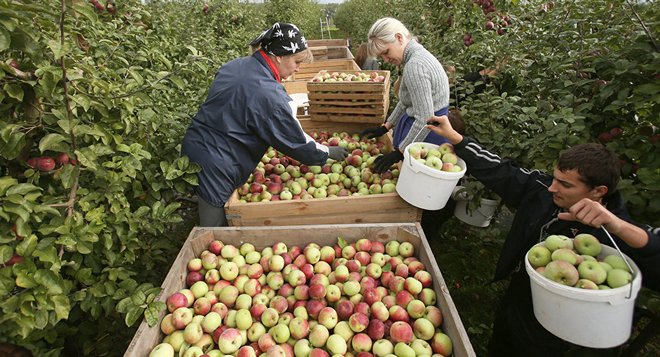

Proper storage of apples when picking them.
The crop will need to be checked several times during the winter. Some fruits may deteriorate during storage. And also apples will need to be placed away from other fruits and vegetables, as far as the area allows.
Preparing for bookmarking for the winter
The most convenient containers for storing apples will be wooden boxes. But they should be disinfected with a solution of potassium permanganate, and then dried well.
Apples will need to be divided according to the following parameters:
- sizes;
- quality;
- varieties.
So, damaged and rotten ones should be selected, large and small should be placed separately. Different varieties will need to be laid out in different containers, because their shelf life is different.
How to stack apples
When the fruits are sorted, they need to be placed in containers, where they will spend time waiting for their time.
There are several styling methods:
- in plastic bags. You need to pour them in and close hermetically to keep the apples longer;
- in layers, sprinkling them with sand or sawdust;
- wrapping each one separately with paper.
History of appearance
Antonovka fast growing
and by the age of three to five it reaches a height of 2-2.5 meters.The gardener can get the first fruits by the fifth or sixth year after planting, and the apple tree usually reaches its maximum fruiting rates in the tenth year of life.
Antonovka belongs to the late autumn varieties, the harvest is in September and early October. it unpretentious and high-yielding variety
, which comes into fruiting late. About 200 kilograms of delicious apples can be removed from ten-year-old trees. Until the age of twenty, the yield is stable, but in the future, a pronounced seasonality may be noted.
These advantages of Antonovka include the following
:
- Unpretentious care.
- Excellent yield.
- Resistant to cold weather, disease and insect pests.
- Delicate taste of the harvested crop.
Of the shortcomings, gardeners note only late onset of fruiting
, and the summer resident will receive the first harvest no earlier than six to seven years after planting the seedlings. In the northern regions, additional insulation for the winter and intensive feeding in the spring will be required.
The gardener needs harvest the entire crop before the first frost appears
... Subsequently, the harvested apples will be able to ripen directly during their storage. You can determine the full maturity of Antonovka by the appearance of a yellowish tint on the peel.
The keeping quality of Antonovka is 3-4 months. The key to long-term storage of apples will be providing fruit with appropriate conditions
... It is necessary to store the harvested crop in a cold dark room with temperatures of 10-15 degrees. Moisture indicator - no more than 70%.
Antonovka and numerous hybrids based on this variety are distinguished by excellent productivity, unpretentious care, the harvested crop has an excellent delicate taste. Due to the ease of caring for apples of this variety, they can be recommended to novice gardeners.
Providing the plantings with high-quality cross-pollination, regular watering, fertilization and other simple maintenance, you can get an excellent harvest on your personal plot.
The summer resident only needs to remember about the mandatory presence of other pollinating varieties in the immediate vicinity of the fruit tree, which will be the key to getting tasty and healthy fruits on the garden plot.
In fact, figuring out how to store Antonovka is quite difficult, since this variety of apples does not have a good keeping quality. When grown commercially, specialty chemicals are commonly used to better protect these fruits from premature spoilage. In addition, in this case, the technology of collecting apples and storing them is strictly observed.
With the right approach, the fruits can be preserved almost until the end of winter, even at home. However, in this case, there are a number of subtleties that must be taken into account. How much apples are stored depends largely on how they were collected and packed, as well as on the temperature and humidity in the room where they will be located. Without taking into account all these features, it will be extremely difficult to ensure that the fruits do not rot.
Apple processing devices
Many sweet desserts, compotes or dried fruits are prepared from apples that are not stored. In any case, they must first be cut, and depending on what is being prepared, it may also be peeled. If the amount of the harvested crop is small, then all the manipulations are done manually.
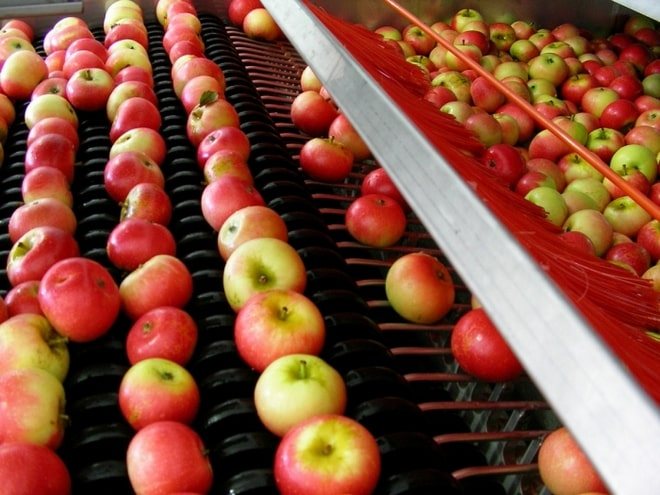

Apple processing device.
However, it is possible to use various devices:
- for the preparation of dried fruits, before it was necessary to cut into slices, put in the sun, make sure that the flies do not spoil it and collect it in time. Now there are various types of dryers that will help you prepare drying faster and without unnecessary worries;
- fruit juices and purees are prepared using juicers.For large industrial volumes, special presses are sold;
- for even and accurate cutting, use special slicers with sets of knives, on which you can control the thickness of the cut;
- to speed up the peeling process, you can use special peelers. With the help of hot steam, all fruits are processed, thereby significantly facilitating the procedure.
Caring for the tree after harvest
After harvesting, you will need to carry out some manipulations that will help prepare the plant for the next season. Caring for a tree in autumn is a guarantee of the health and fruiting of the tree next year.
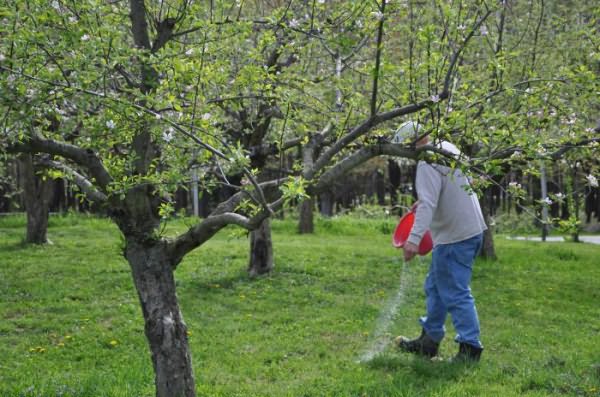

Leaving the apple tree after harvest.
Here's what you need to do:
- Drizzle. Bringing in moisture will help the tree absorb enough moisture through the roots so that it does not dry out over the winter. The water rate is different for different types of trees, but on average, young plantings will need about 50 liters of water, and adults - 150 liters.
- Apply fertilizer. Often this procedure is combined with watering. In the fall, you will need to add superphosphate and potassium, these substances will help the plant survive the winter.
- Process. First you need to examine the bark, clean it of lichens and moss. This will also help remove some of the pests. After that, the tree must be sprayed with urea and Bordeaux liquid to protect it from fungal diseases.
- Whitewash. This procedure is carried out even before frost, it will help protect the tree from pests and frosts, including spring ones.
- Cover. After all the debris has been removed under the tree, you can mulch the trunk circle. If the climate is harsh, you can cover the trunk with burlap and prop it up.

